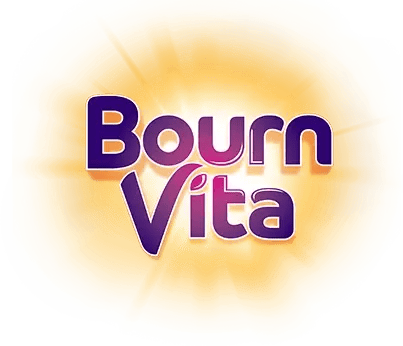- Amaranth Leaves (Chaulai Saag)
- Drumstick Leaves (Moringa Leaves / Sahjan ke Patte)
- Fenugreek Leaves (Methi)
- Spinach (Palak)
- Bathua (Chenopodium / Goosefoot Leaves)
Introduction

Strong bones are built over time, not just with age but with the right food choices every day. While calcium is often associated with milk, there’s another rich and reliable source sitting right on your plate, vegetables. Some of the most commonly available Indian vegetables carry a surprisingly high amount of calcium, along with other nutrients that support absorption and bone strength.
Leafy greens, cruciferous vegetables and saag varieties have calcium in a form that’s easy for your body to absorb, especially when combined with vitamin-rich foods. These vegetables also bring in fibre, magnesium, potassium and plant-based antioxidants that protect and nourish your bones naturally. They’re especially important in vegetarian and low-dairy diets where alternative sources of calcium are essential.
A bowl of stir fry, a handful of greens in dal or a saag-based curry can go a long way in maintaining bone density, especially for children, teens and older adults. These foods not only strengthen bones but also support overall metabolic health, keeping joints, muscles and energy levels in better balance.
5 Calcium-Rich Vegetables That Support Bone Strength Naturally

Calcium is a key nutrient your body needs every day, not only to build and maintain strong bones, but to help muscles work properly, nerves send signals, and your heart function well. While dairy is often the go-to source, many everyday vegetables also provide a solid amount of calcium, especially when they’re prepared right and eaten regularly.
Here are five calcium-rich vegetables that support bone health across all ages, whether you're caring for a growing child, a working adult, or an ageing parent.
Amaranth Leaves (Chaulai Saag)
According to a study published in, Sci Rep. 2020, amaranth leaves provide approximately 215 mg of calcium per 100 grams and are a reliable, natural source of bone-supporting nutrients. They’re also rich in iron and Vitamin C, which help improve the body’s ability to use calcium effectively. You can cook them with dal, add them to sabzis, or make parathas. These greens are easy to digest and ideal for children, seniors, and everyone in between.
Drumstick Leaves (Moringa Leaves / Sahjan ke Patte)
As per a study published in Antioxidants (Basel). 2022, moringa leaves are among the richest plant sources of calcium, offering around 250–350 mg per 100 grams. They are also packed with Vitamin A, iron, and essential amino acids. These leaves are highly valued in traditional Indian cooking and can be used in dry sabzis, soups, or even chutneys. They’re especially useful for people with low dairy intake or those needing a concentrated source of plant-based calcium.
Fenugreek Leaves (Methi)
A study published in Saudi J Biol Sci. 2015, shows that methi leaves contain around 180 mg of calcium per 100 grams and bring additional benefits like iron, fibre, and Vitamin K. Regular consumption of methi supports both bone strength and overall metabolism. These leaves are versatile and can be used in parathas, khichdi, or mixed into dal. Methi is especially beneficial during winters when it is fresh and widely available.
Spinach (Palak)
Research conducted by Pharmacogn Rev. 2016, spinach provides about 99 mg of calcium per 100 grams and also contains magnesium, folate, and iron. While it does have oxalates that may reduce calcium absorption, eating spinach with vitamin C-rich ingredients like lemon or tomatoes can balance that effect. Spinach can be included in meals as palak paneer, soups, smoothies, or stuffed in rotis.
Bathua (Chenopodium / Goosefoot Leaves)
Study published in Molecules. 2023, shows that bathua offers around 200 mg of calcium per 100 grams and is a winter-season favorite in many parts of India. It’s high in fibre, Vitamin A, and phosphorus, making it excellent for bone and joint support. You can use it to make saag, add it to rotis, or include it in mixed green curries. It’s especially good for strengthening bones in elderly people or those recovering from weakness.
Conclusion

Calcium-rich vegetables may not come in cartons or jars, but they quietly build strength in your body with every meal. These five vegetables are all easy to find, prepare, and enjoy in Indian kitchens. By including them regularly in your meals, you help your bones stay strong without depending only on dairy or supplements. They’re good for your gut, full of flavor, and perfect for lifelong nourishment. A plate with greens is a plate full of strength.
Her love for storytelling began with reading her grandfather’s speeches, where Tarishi saw the power of words in creating lasting memories. Combining her passions for food and writing, she has turned her life into a fulfilling path of sharing stories that celebrate flavours and how food brings communities together.
The views expressed are that of the expert alone.
The information provided in this content is for informational purposes only and should not be considered a substitute for professional medical advice, diagnosis, or treatment. Always seek the advice of your physician or another qualified healthcare provider before making any significant changes to your diet, exercise, or medication routines.
References
https://pmc.ncbi.nlm.nih.gov/articles/PMC10343354/
https://pmc.ncbi.nlm.nih.gov/articles/PMC5214553/
https://pmc.ncbi.nlm.nih.gov/articles/PMC4894452/
















